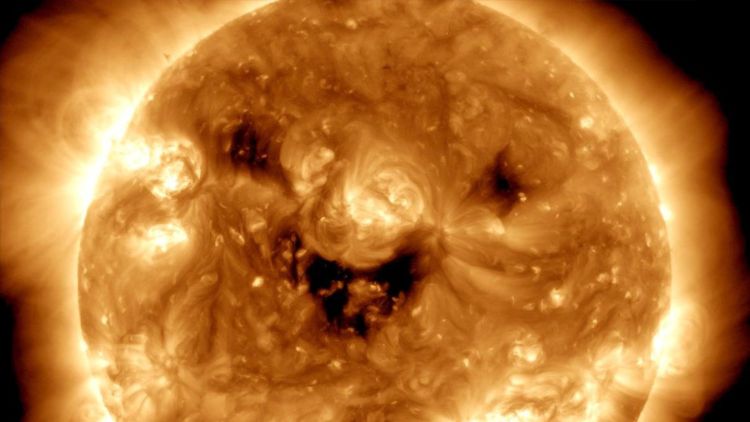NASA Captured a ‘Smiling Sun’. Have you seen the stunning images yet?


One of NASA’s satellites photographed patterns on the sun’s surface that appeared to depict a smiling face, and the agency has now released an image of the sun in that state.
The photos were shared on social media by the US space agency with the caption: “NASA’s Solar Dynamics Observatory caught the sun ‘smiling.’ Seen in ultraviolet light, these dark patches on the Sun are known as coronal holes and are regions where fast solar wind gushes out into space.”
When the image was posted, people were gobsmacked. They came up with a variety of objects to contrast with the smiling sun. One person described it as a Halloween jack-o-lantern, while another stated, “Please, never smile again. I fainted today due to the heat.” Another user commented, “If Teletubbies wanted a realistic sun, this would be it.”
On a serious note
Under the headline “THIS IS NO LAUGHING MATTER,” SpaceWeather.com issued a warning, saying the smiley face was formed by holes in the sun’s atmosphere but was “spewing a triple stream of solar wind toward Earth.” It is possible that the first contact with auroras will occur on Saturday.
A solar storm occurs when the sun emits massive amounts of energy in the form of solar flares and coronal mass ejections. These phenomena propel streams of electrical charges and magnetic fields toward the Earth at approximately three million miles per hour.
While that may sound frightening, the end result will be more appealing than apocalyptic.
When a solar storm hits Earth, it disrupts the planet’s magnetic field, resulting in auroras near the Arctic and Antarctic circles – the northern lights, or aurora borealis, in the northern hemisphere and the aurora australis, or southern lights, in the southern hemisphere.
Since it occasionally appears south of the Arctic Circle, Scotland may be treated to a light show this Halloween weekend. Saturday night is a good time to view it due to the clear skies.
Significance of the Black Patches on the Sun
According to NASA, the patches are known as coronal holes, which are generally invisible to our eyes but may be seen in UV light.
Coronal holes are areas on the sun’s surface where fast solar wind erupts into space. They have lower temperatures and thus appear much darker than their surroundings because they contain little solar material. The magnetic field is open to interplanetary space here, allowing solar material to escape in a fast stream of solar wind. Coronal holes can last anywhere from a few weeks to several months.
The holes are not a new phenomenon, as they appear throughout the sun’s 11-year cycle. According to NASA, they can last much longer during solar minimum, a period of time when the Sun’s activity is significantly reduced.
“These ‘coronal holes’ are important to understanding the space environment around the Earth through which our technology and astronauts travel,” NASA stated in 2016 after discovering coronal holes covering “six-eight percent of the total solar surface.”
While it is unknown what causes coronal holes, they are associated with areas on the sun where magnetic fields soar up and away instead of looping back down to the surface as they do elsewhere. “Scientists study these fast solar wind streams because they occasionally interact with the earth’s magnetic field, resulting in what’s known as a geomagnetic storm, which can expose satellites to radiation and interfere with communications signals,” NASA explained at the time.
